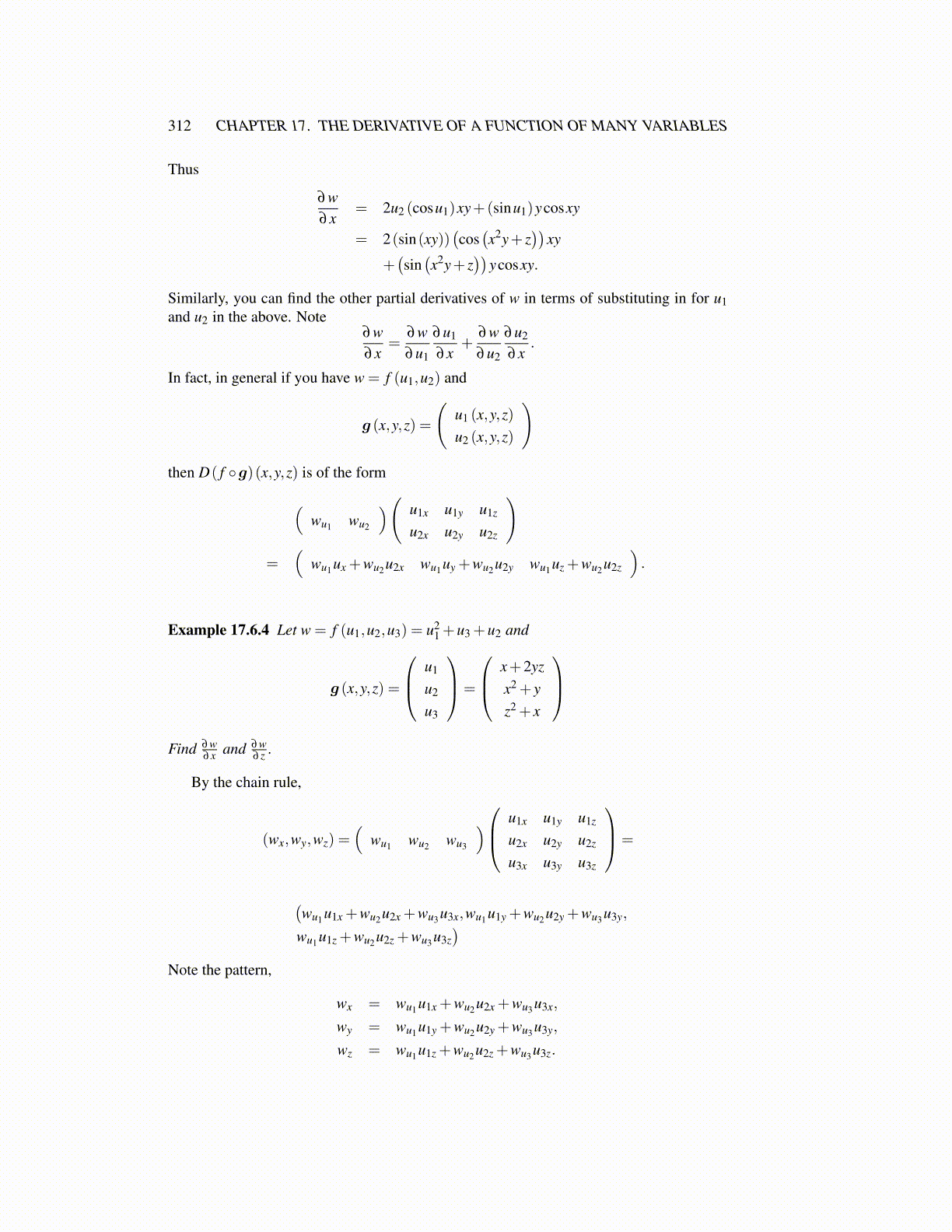
312 CHAPTER 17. THE DERIVATIVE OF A FUNCTION OF MANY VARIABLES
Thus
∂w∂x
= 2u2 (cosu1)xy+(sinu1)ycosxy
= 2(sin(xy))(cos(x2y+ z
))xy
+(sin(x2y+ z
))ycosxy.
Similarly, you can find the other partial derivatives of w in terms of substituting in for u1and u2 in the above. Note
∂w∂x
=∂w∂u1
∂u1
∂x+
∂w∂u2
∂u2
∂x.
In fact, in general if you have w = f (u1,u2) and
g (x,y,z) =
(u1 (x,y,z)u2 (x,y,z)
)
then D( f ◦g)(x,y,z) is of the form
(wu1 wu2
)( u1x u1y u1z
u2x u2y u2z
)=
(wu1ux +wu2u2x wu1uy +wu2u2y wu1uz +wu2u2z
).
Example 17.6.4 Let w = f (u1,u2,u3) = u21 +u3 +u2 and
g (x,y,z) =
u1
u2
u3
=
x+2yzx2 + yz2 + x
Find ∂w
∂x and ∂w∂ z .
By the chain rule,
(wx,wy,wz) =(
wu1 wu2 wu3
) u1x u1y u1z
u2x u2y u2z
u3x u3y u3z
=
(wu1u1x +wu2u2x +wu3u3x,wu1u1y +wu2u2y +wu3u3y,
wu1u1z +wu2u2z +wu3u3z)
Note the pattern,
wx = wu1u1x +wu2u2x +wu3u3x,
wy = wu1u1y +wu2u2y +wu3u3y,
wz = wu1u1z +wu2u2z +wu3u3z.